Disclaimer: This post contains affiliate links to handpicked partners, including tours, gear and booking sites. If you click through or buy something via one of them, I may receive a small commission. This is at no extra cost to you and allows this site to keep running.
Ready for revelry in one of Europe’s most unique music festival settings? This Colours of Ostrava guide will set you on the right note.
The Czech Republic’s former industrial powerhouse city of Ostrava may not be the first place that comes to mind when considering music festivals, but it will be the most memorable since it is not set in your typical festival field. Every July, the ensemble of red brick structures and the steelworks skeleton of Dolní Vítkovice, located on the outskirts of this gritty Moravian city, rumble differently with the four-day Colours of Ostrava music festival.
It’s quite a revival from when it was a coal mine and iron forging works between 1828 and 1998, and then abandoned. Between rotund gasometers and soaring furnaces, protruding smokestacks and jumbo pipelines are a mesh of 18 performance stages, lawn lounges and beach bars, food stalls and wine halls, creative makers and local crafters. The old roar and rattle of metallurgy is replaced with over 350 performances in a melody of folk and jazz, Balkan beats and blues, pop, indie rock, electronica, world music acts, and global megastar headliners.
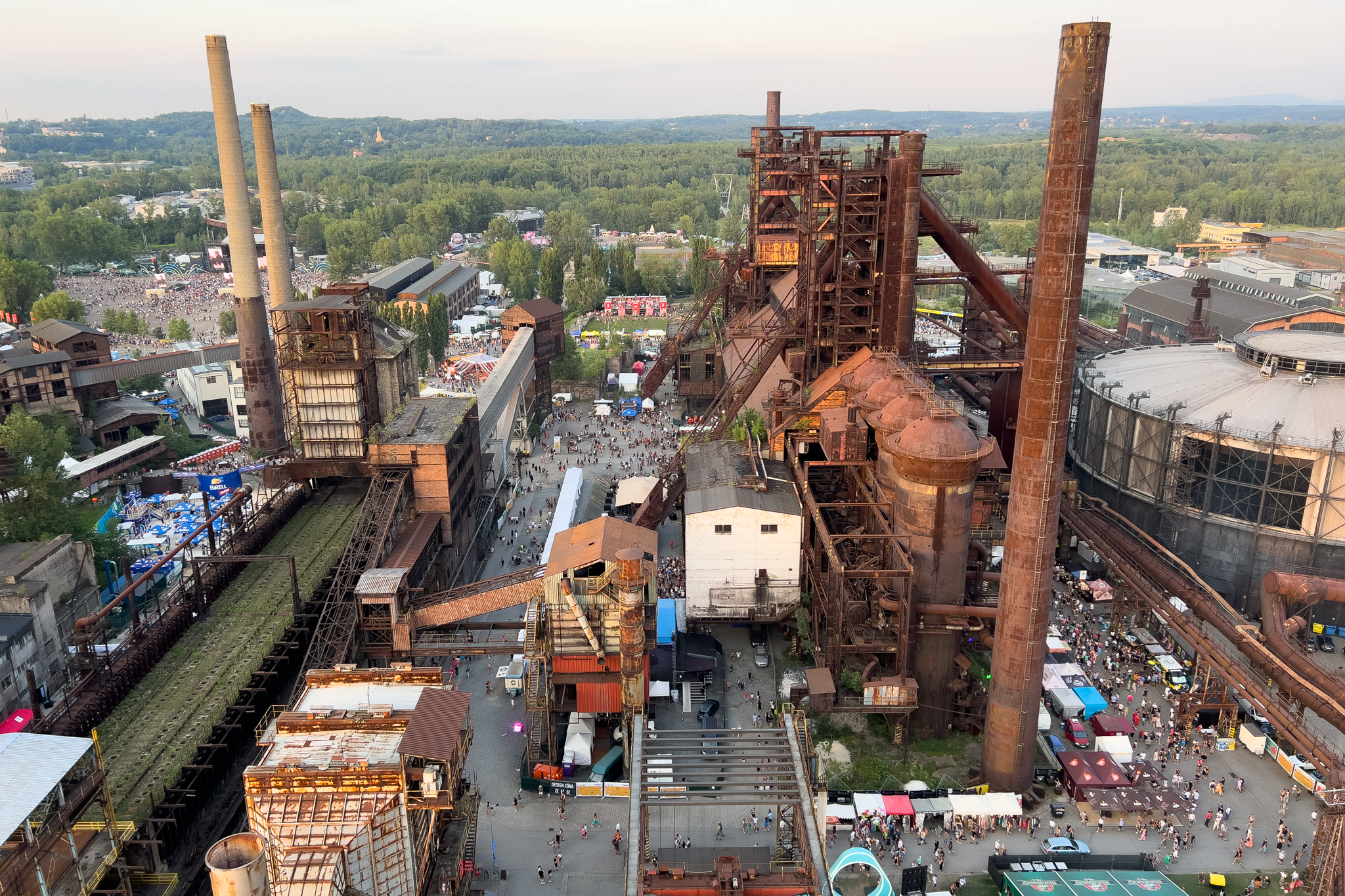
The unique post-industrial setting of the Colours of Ostrava festival.
I attended the Colours of Ostrava festival in 2024 as a press representative, by invitation of Moravian-Silesian Tourism.
Contents
- The Origins of Colours of Ostrava
- More than Headliners: Discovering New Music
- Beyond the Music: Art and Culture Programme
- Colours of Ostrava Tickets
- Where to Stay in Ostrava during the Festival
- How to Get to the Colours of Ostrava Festival
- Getting to Ostrava
- Essential Colours of Ostrava Festival Tips for First-Timers
The Origins of Colours of Ostrava
Colours of Ostrava was born from the vision of director Zlata Holušová. What began in 2002 as a small niche gig along the boisterous bar-lined Stodolní Street and in the city’s central Černá louka park quickly grew, selling out by 2009 with 25,000 attendees. By 2012, the festival had outgrown its roots and relocated to the industrial Dolní Vítkovice venue – a striking, post-apocalyptic complex that accommodates over 40,000 people.
It’s put the Czech Republic’s third-largest city on the map, morphing into one of Central Europe’s largest multi-genre music festivals. However, it goes beyond just music, incorporating art installations, theatre shows, discussions, and workshops.

The festival fills the grounds of the former coal mine and iron forging works that shut down in 1998.

Stalls and stages line the laneways of the Dolní Vítkovice site.

One of the green lounge lawns at the Colours of Ostrava festival ground.
More than Headliners: Discovering New Music
Naturally, a festival is judged according to its roster of big-hitter artists. Since its debut in Dolní Vítkovice, Colours of Ostrava has featured the likes of Macklemore, Interpol, The Killers, The Cure, Florence + The Machine, Imagine Dragons, Jamiroquai, Björk, Kasabian, and Alanis Morissette on its big stages. In 2024, I saw Lenny Kravitz, Sam Smith, and Tom Morello headline, while on an afternoon set, Sean Paul led a sunshine-fuelled nostalgic crowd through his decades of mega hits. 2025’s big names include Sting, The Chainsmokers and Iggy Pop.
Festivalgoers are primarily from the Czech Republic, and the festival remains relatively under the radar to international audiences. The bonus is that the crowds at Colours of Ostrava are not as jam-packed as those at UK festivals, so I got front-of-stage (or close enough) for a couple of headliners, including Tom Morello. I couldn’t have gotten that close to Lenny Kravitz at another festival unless I stood waiting for hours pre-gig.
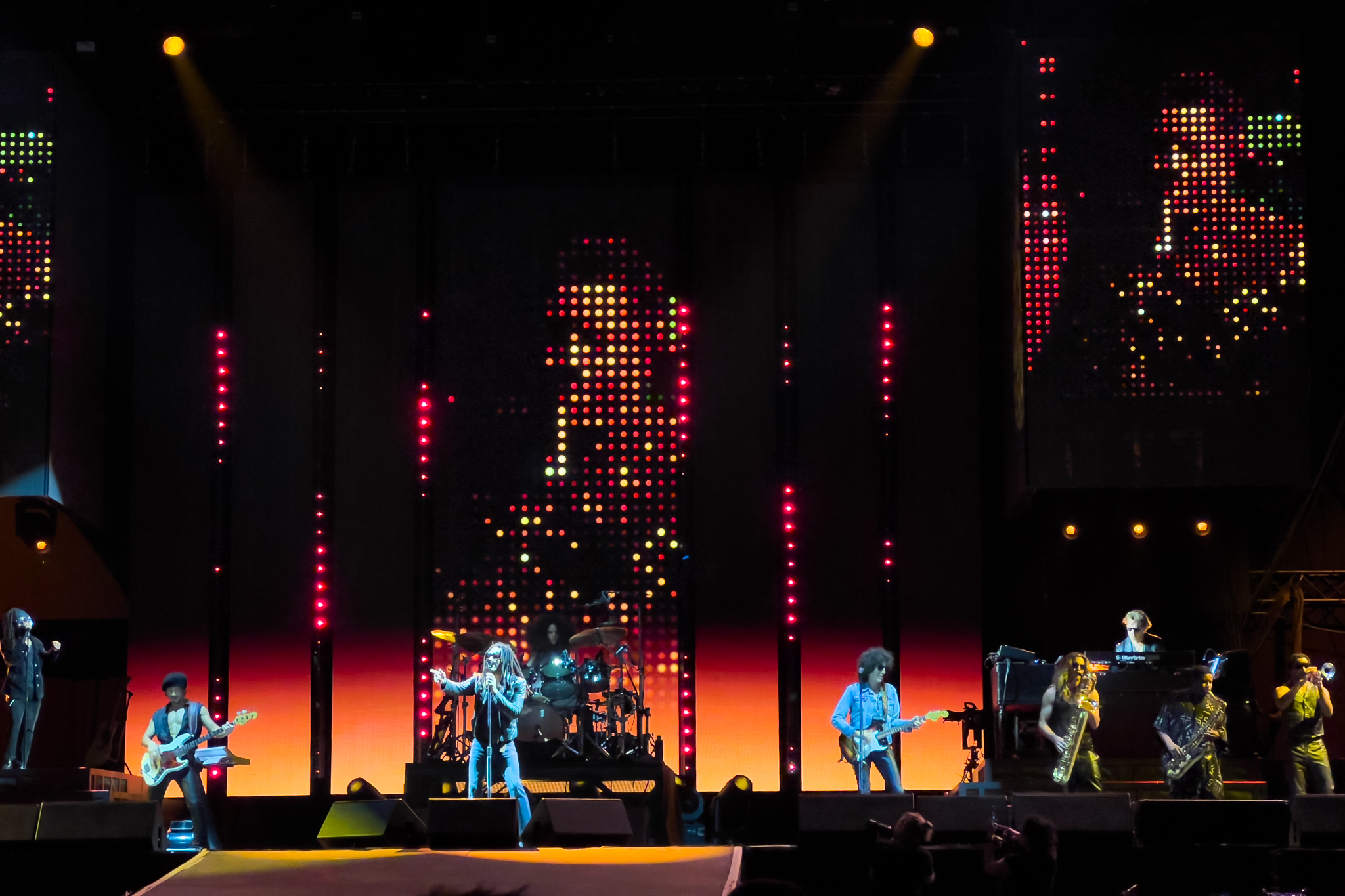
Getting up close to Lenny Kravitz at Colours.
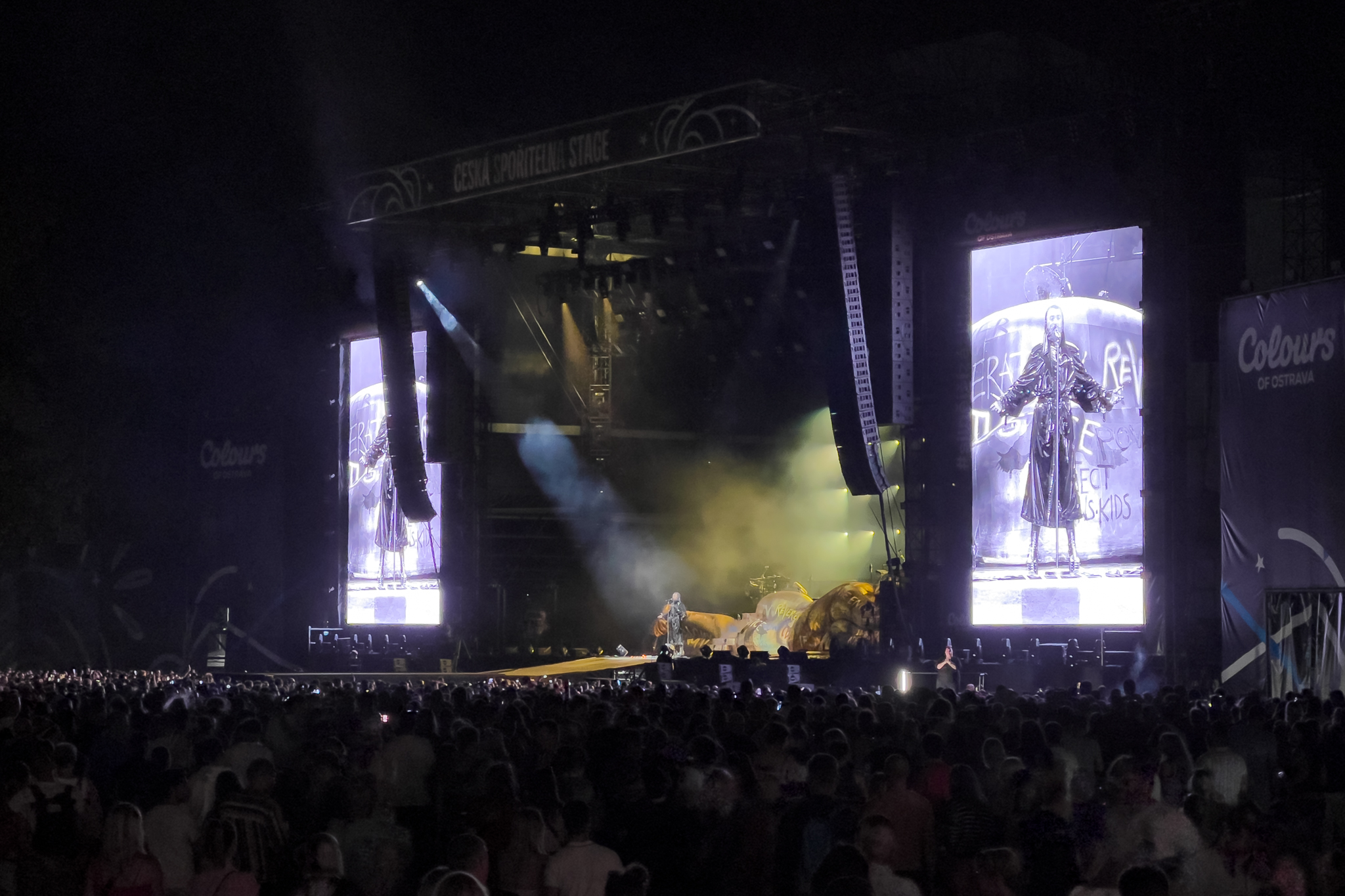
View from the VIP area of Sam Smith’s headline performance.
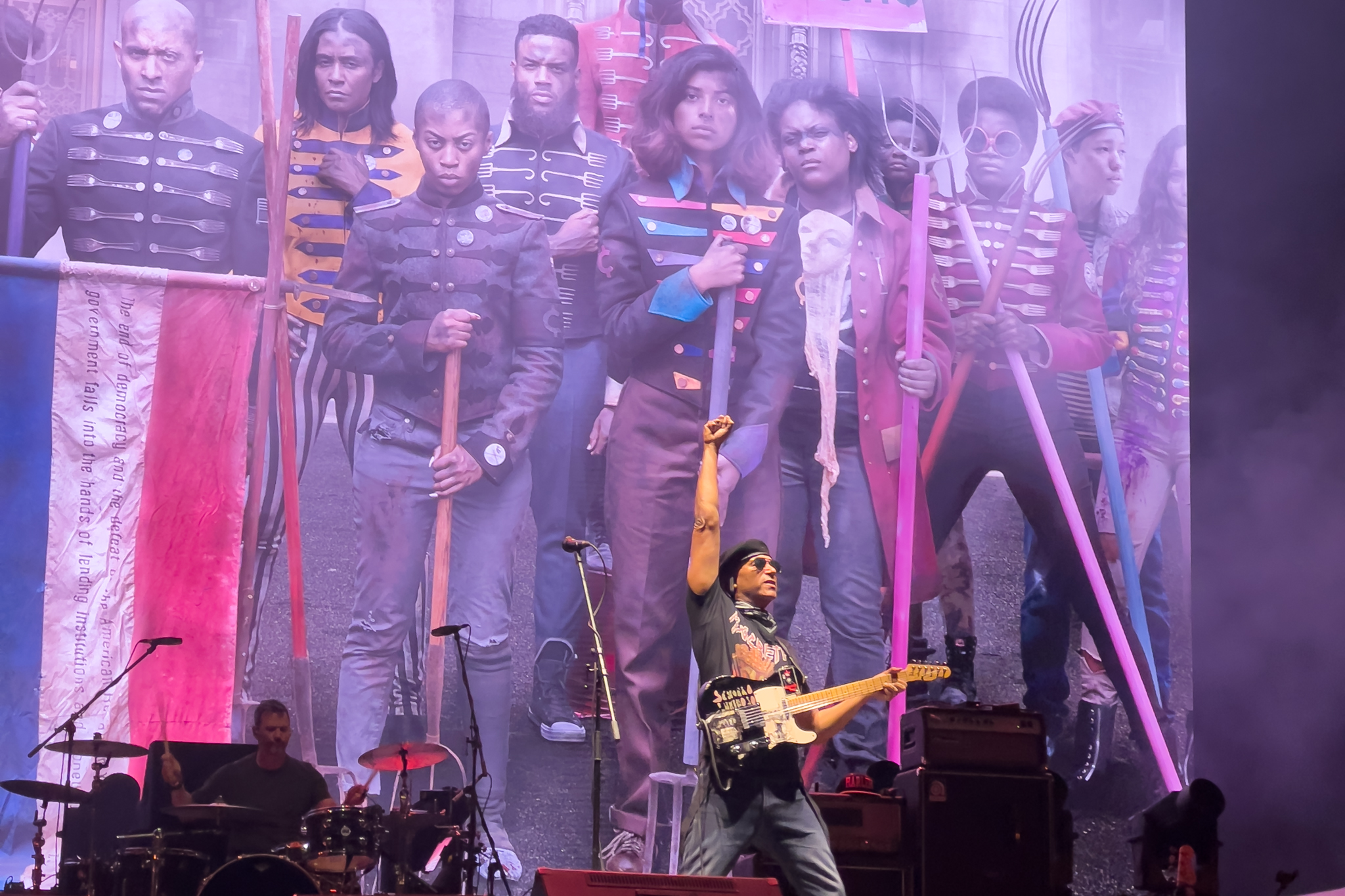
Front of stage for Tom Morello.
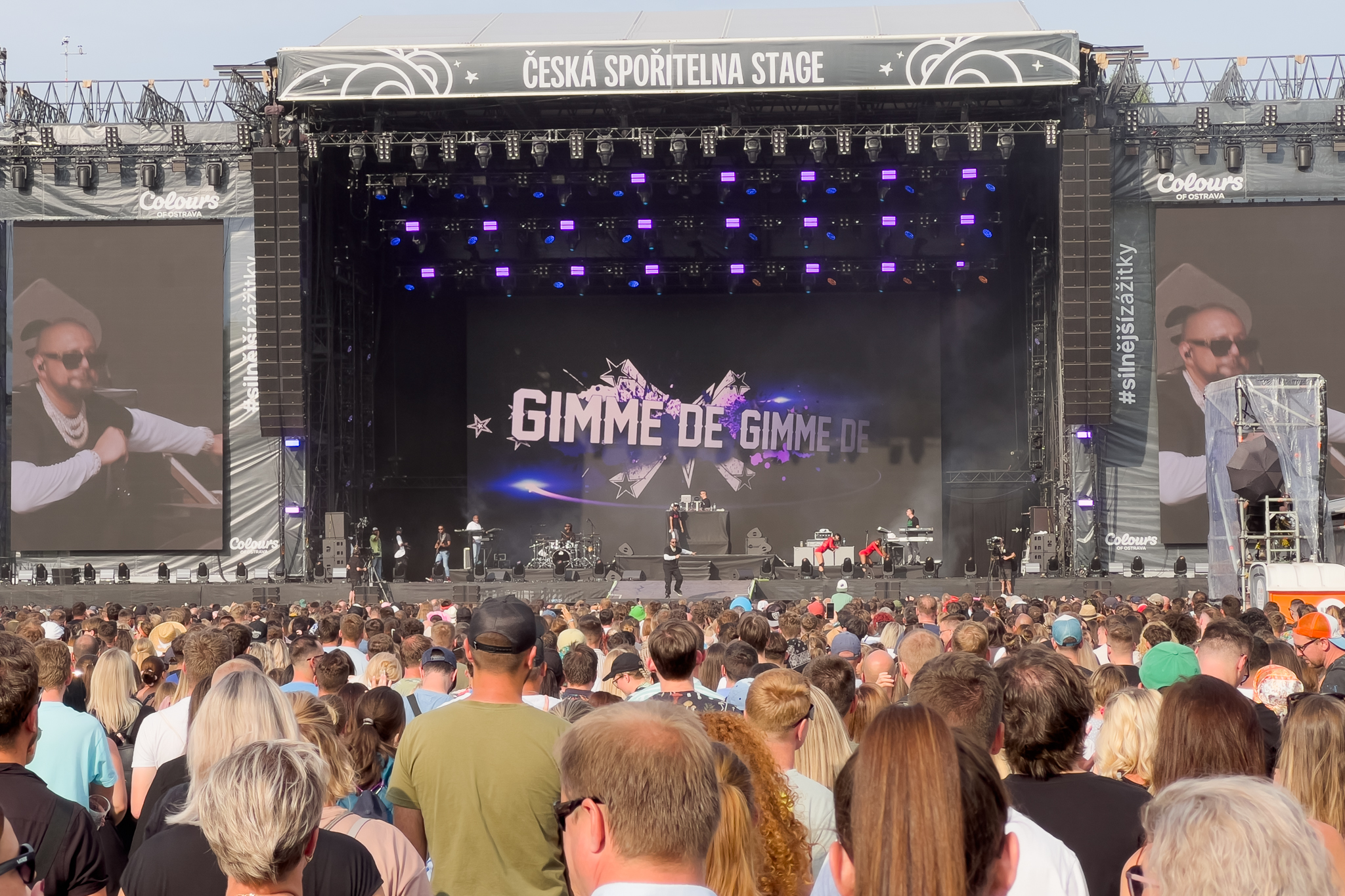
Sean Paul’s nostalgic afternoon set.
Yet, Colours of Ostrava is more than its headliners; many emerging artists from local Czech regions, neighbouring countries, and worldwide are given a platform to perform. I found myself spending much of each day roaming freely without too much of a rigid plan to stumble upon musical acts I’d never heard of. I saw American punk rock band Gogol Bordello, bluesy American guitarist Gary Clark Jr, German Elektropop band ClockClock, and the West African Burkinabe griot music of Avalanche Kaito. At festivals, some of the best sets are the ones you didn’t plan on seeing.
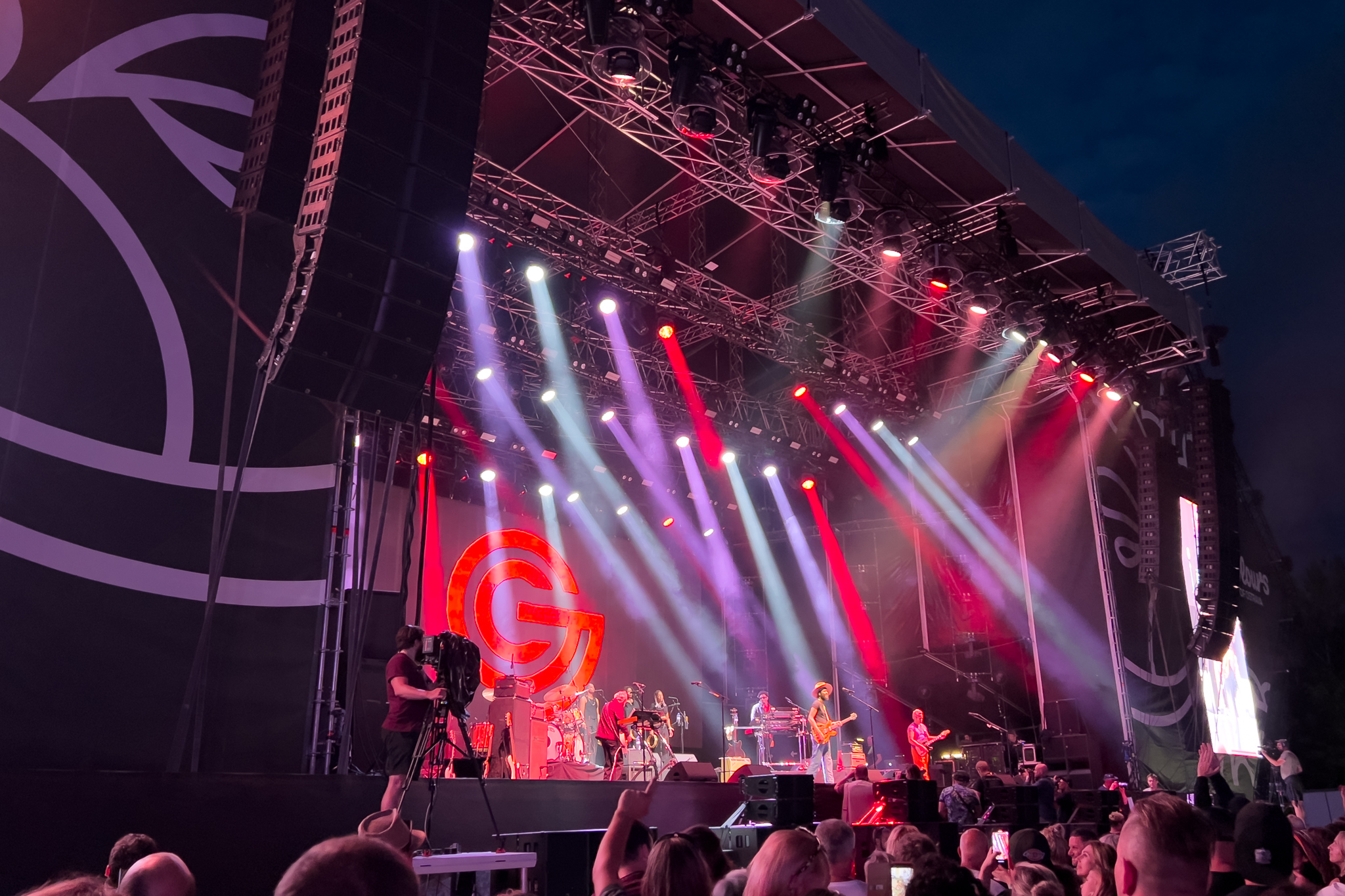
Watching Gary Clark Jr. Finding new-to-me musicians on smaller stages.
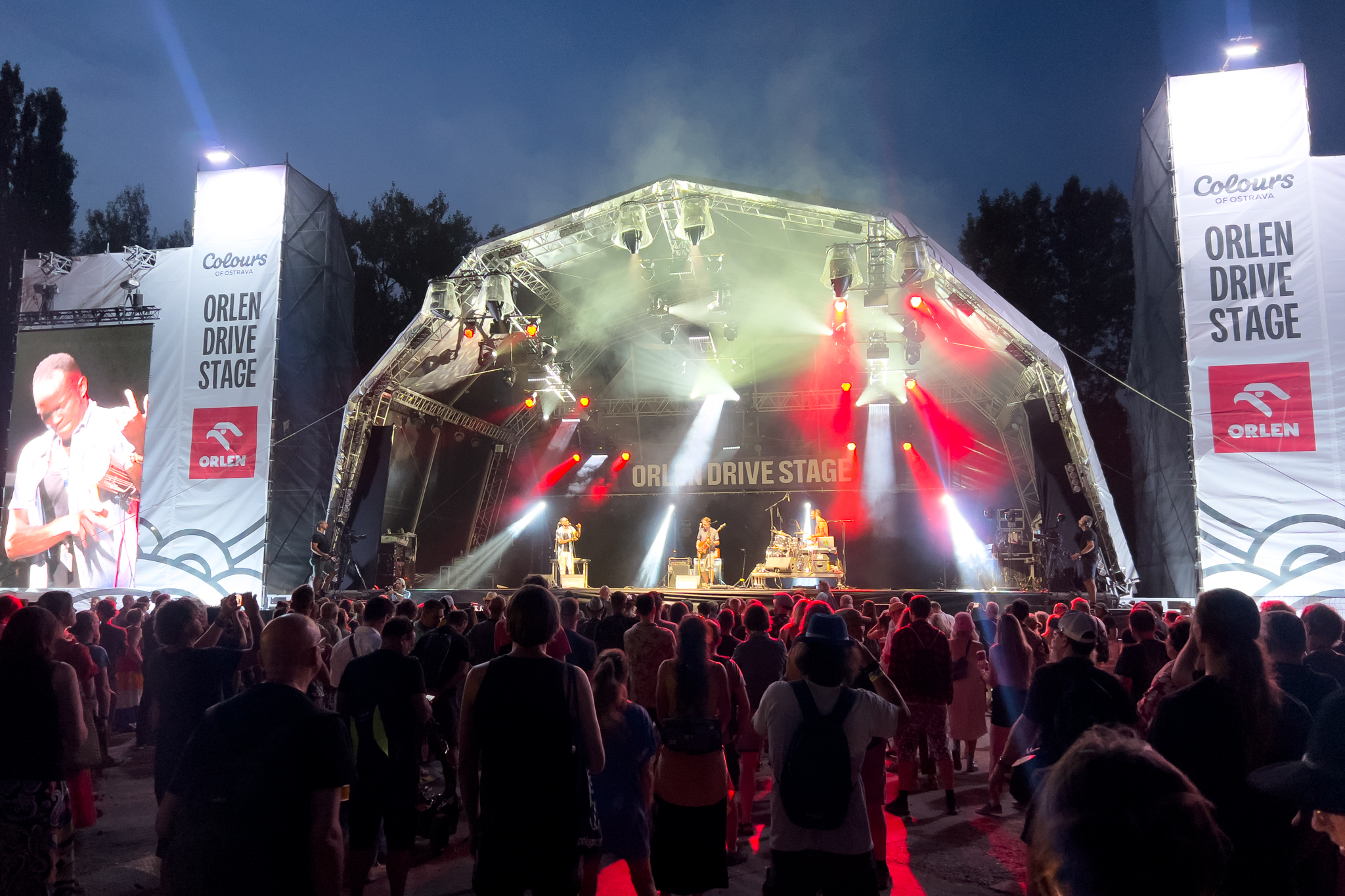
Sundown sounds of Avalanche Kaito.
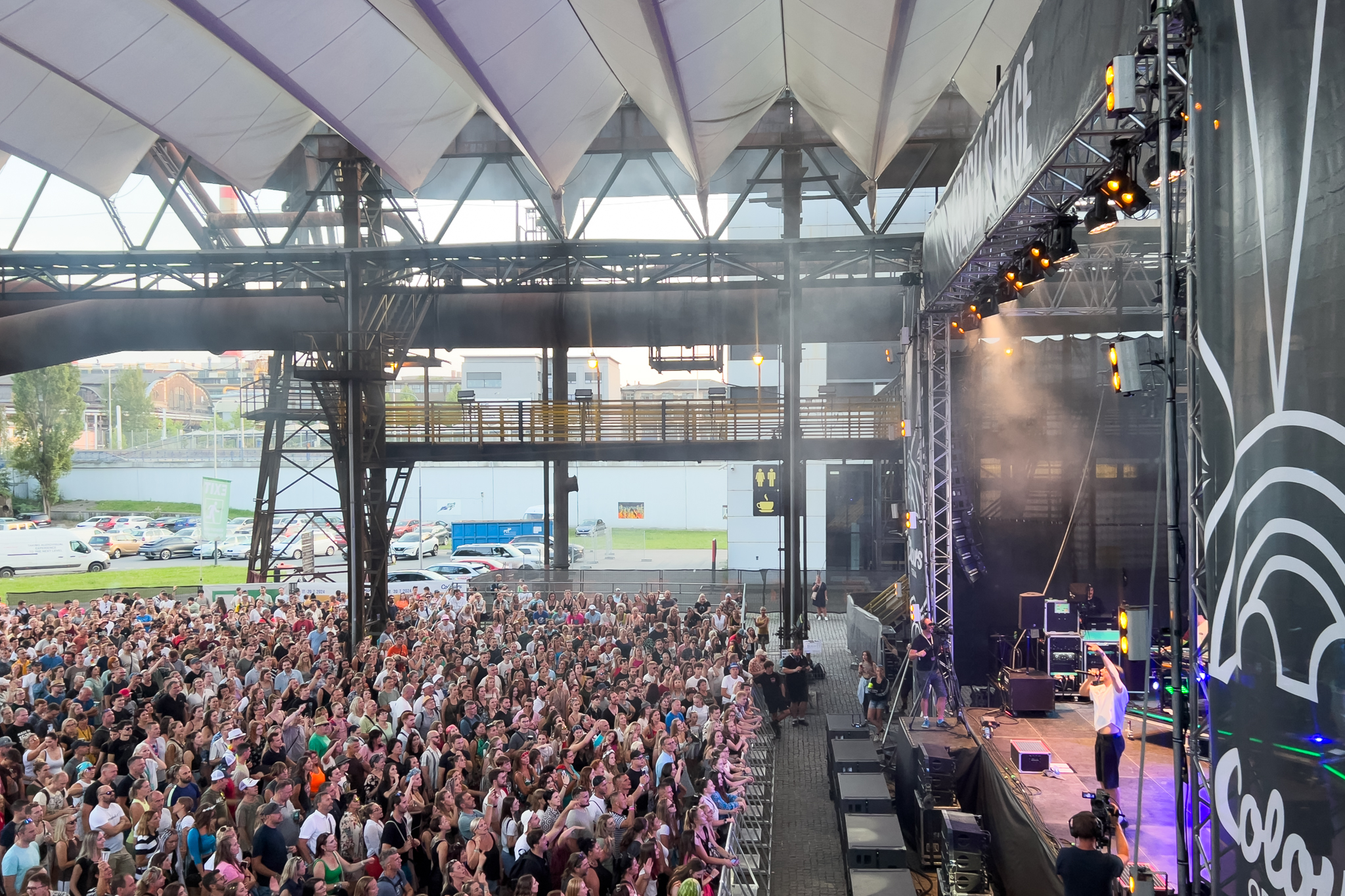
Elektropop ClockClock and a fun crowd.
As the sun sets on the headliner stages, the electronic music scene ups the ante, especially from the Luxor Stage, where you’ll find some of the best DJs and live electronic acts from around the world spinning the decks from 9 pm until the early hours.
Beyond the Music: Art and Culture Programme
Colours of Ostrava prides itself on being a cultural festival packed with theatre shows and dance workshops, film screenings and panel discussions on global issues.
The Meltingpot Forum
The Meltingpot Forum is the collective name given to the 12 stages scattered throughout the festival grounds. The festival labels its programme, which featured over 150 speakers in 2024, as the largest inspirational forum in Europe. There are underground comedy shows, such as Siegfried & Joy’s hilarious and joyful magic performance, avant-garde productions, traditional theatre performances, a film and documentary programme, and lectures on a wide range of topics, including politics, poetry, storytelling, science, media, and innovation. Art projects include sculptures standing throughout the site and interactive pieces you can touch or clamber through.
See the Meltingpot 2025 speaker list here.
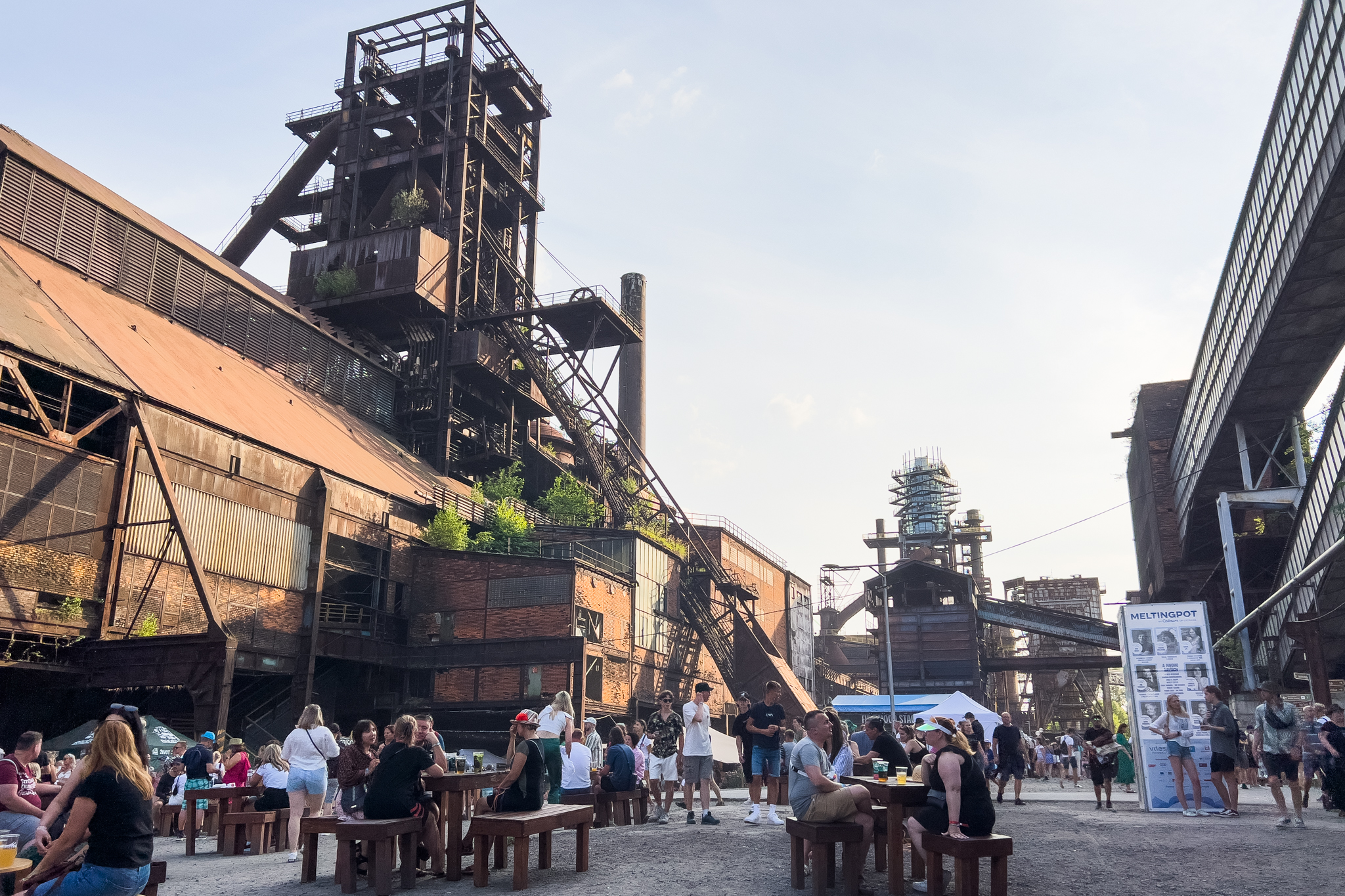
There’s no festival setting quite like Colours of Ostrava.
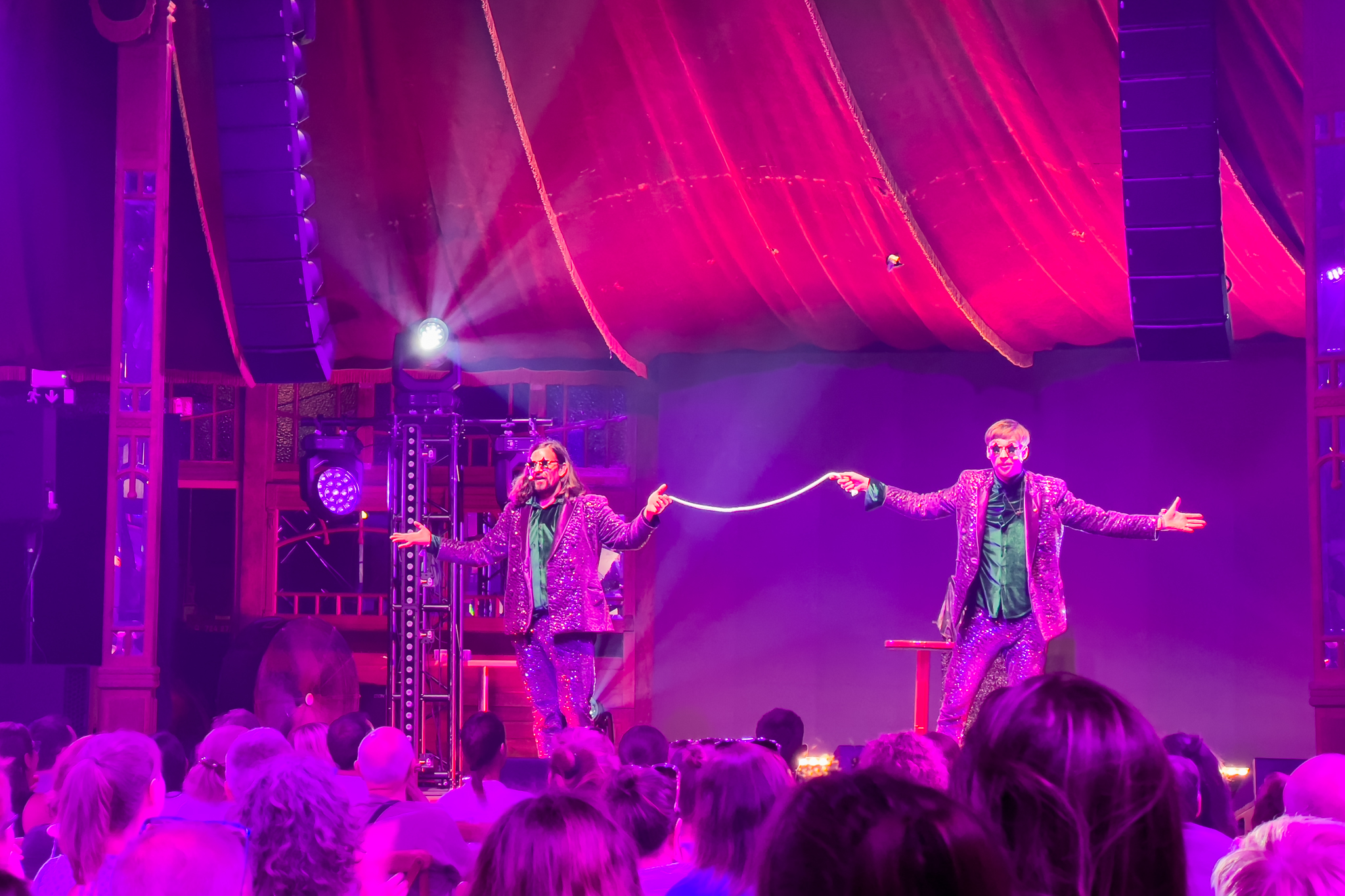
Watching the theatre-set magic of Siegfried & Joy.
Touring the Bolt Tower
You can’t miss the shimmering blue heights of the Bolt Tower – it’s a Dolní Vítkovice symbol. Built upon the former iron blast furnace site, the spiking glass layers were designed to resemble fire. The tours of the sites continue during the festival, or you can head up the skip lift to the top of Furnace No. 1 for the café and the winding viewing platforms, which offer the best panoramic view over the entire festival site. It’s popular for sunset, so book ahead to get a spot.

The 40,000-strong festival crowd fills Dolní Vítkovice every July.
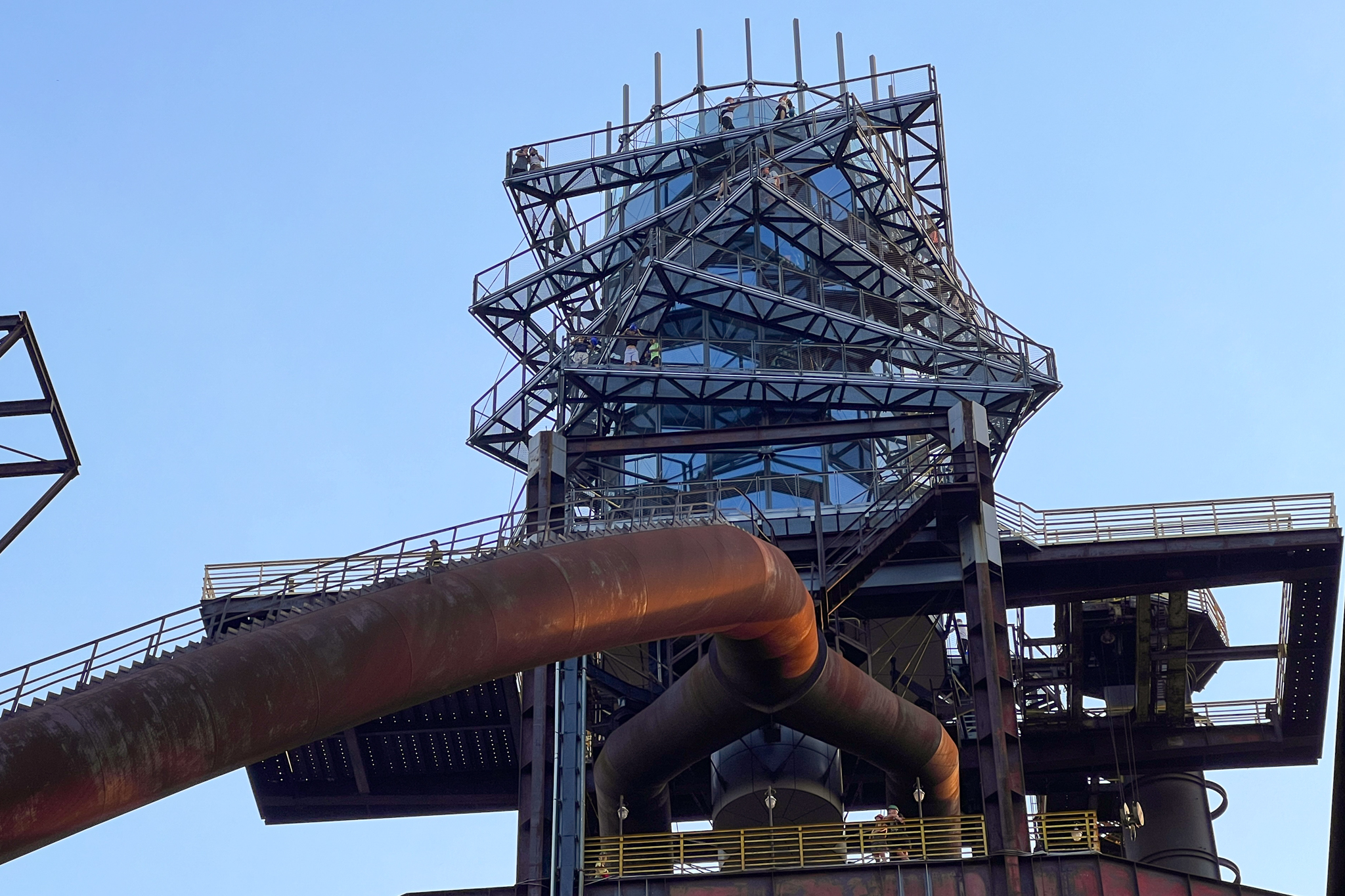
The best view of the festival site is from the Bolt Tower’s viewing platforms.
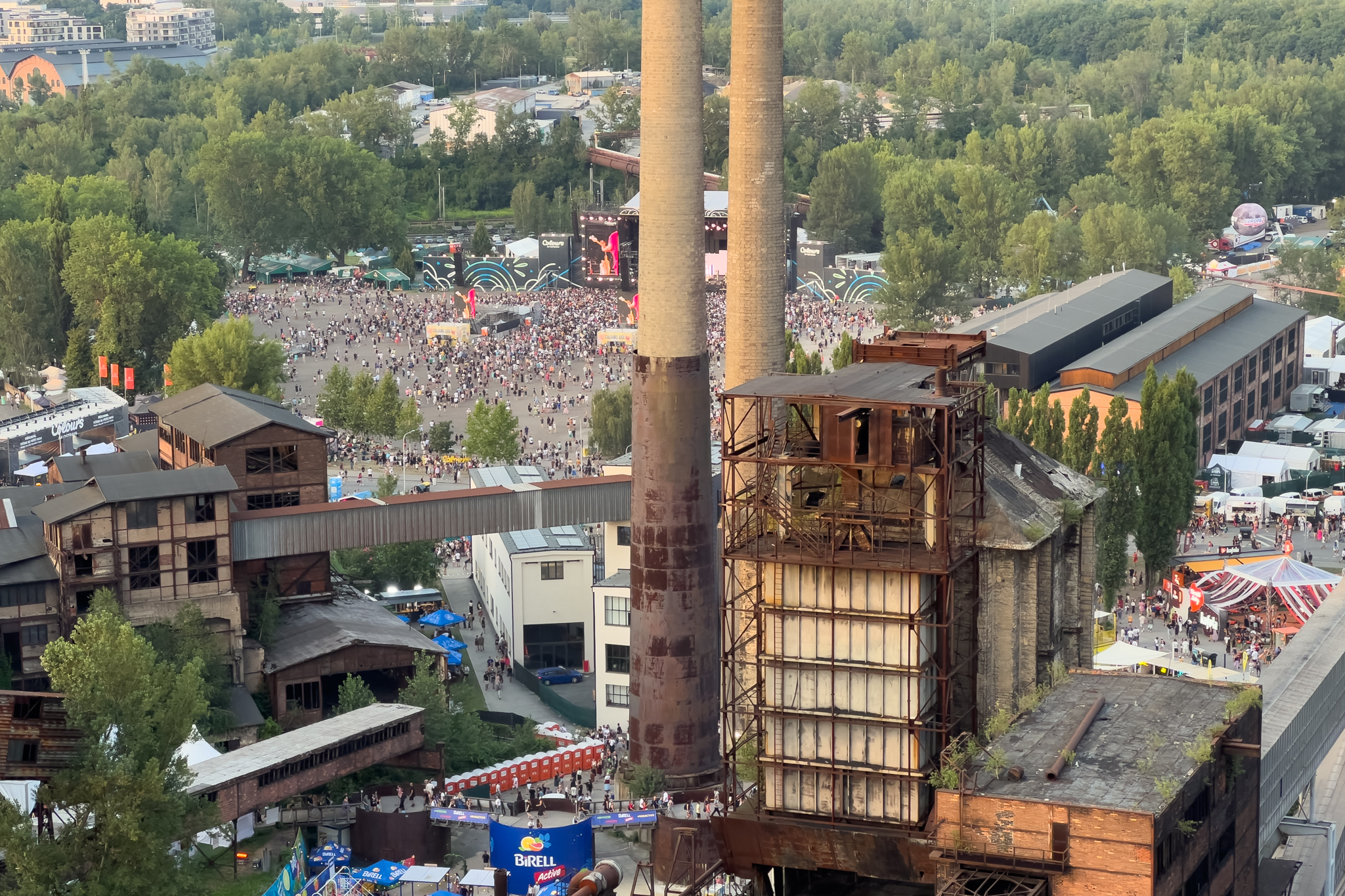
Elevated views over to the main stage, from the heights of the Bolt Tower.
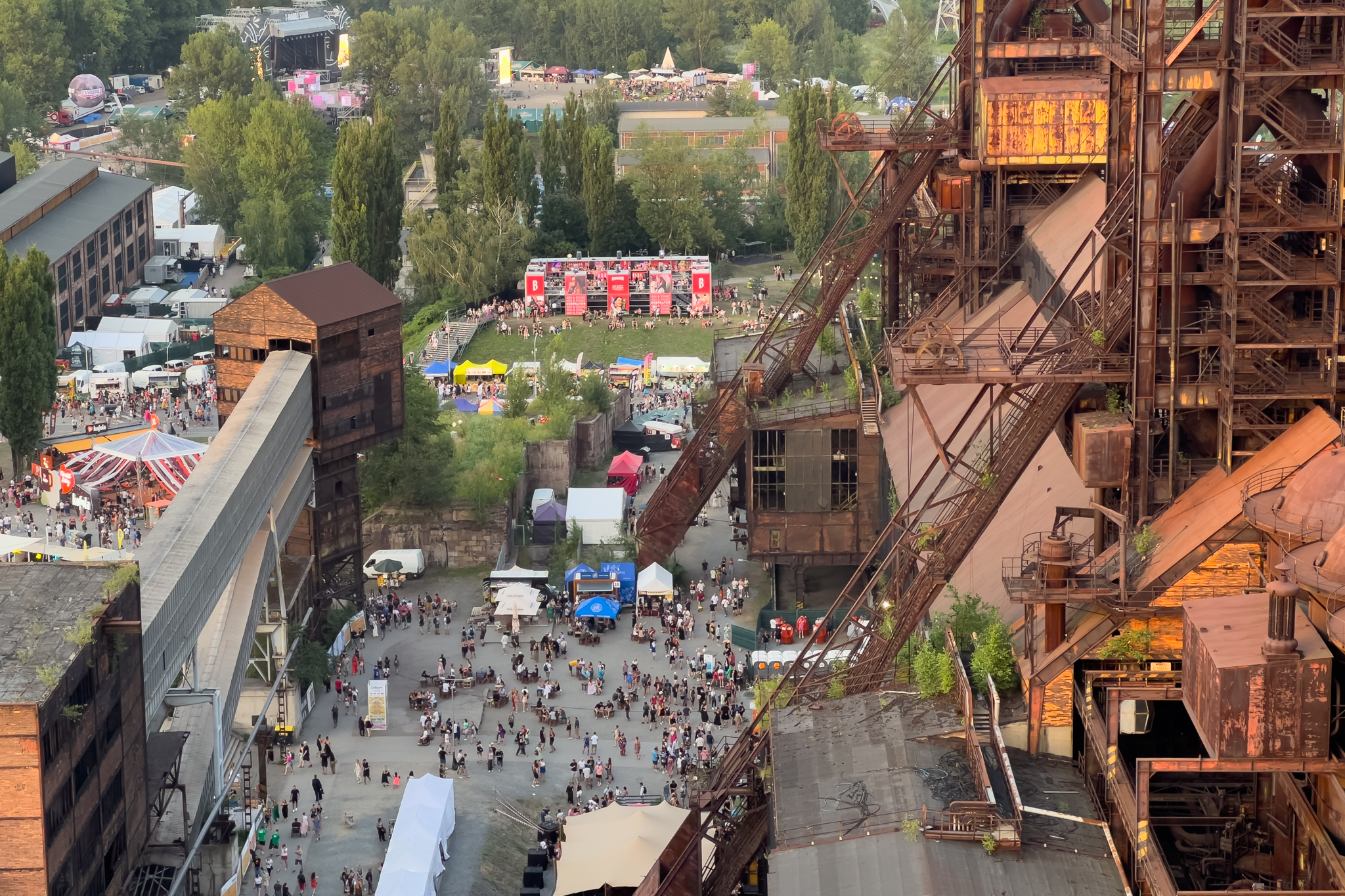
A host of stages surround the skeleton of ironworks.
Food and Drink: Local Staples and Global Tastes
Local food stalls serve up hearty Czech classic snacks, but there’s also a selection of vegan and vegetarian options, as well as international flavours including Thai, Indian, and Mediterranean.
Czech beer dominates the menu for drinks – and rightly so, given the country’s reputation for the most perfectly poured Pilsner. There is also a craft beer bar and a wine tunnel featuring a selection of wines that have been ranked among the top 100 best wines in the Czech Republic, as showcased in the renowned wine cellar at Valtice Castle. But you’ll also stumble upon impromptu stations with cocktails, fresh juices and water stalls.

Food and drink stalls fill all corners of the Dolní Vítkovice site.
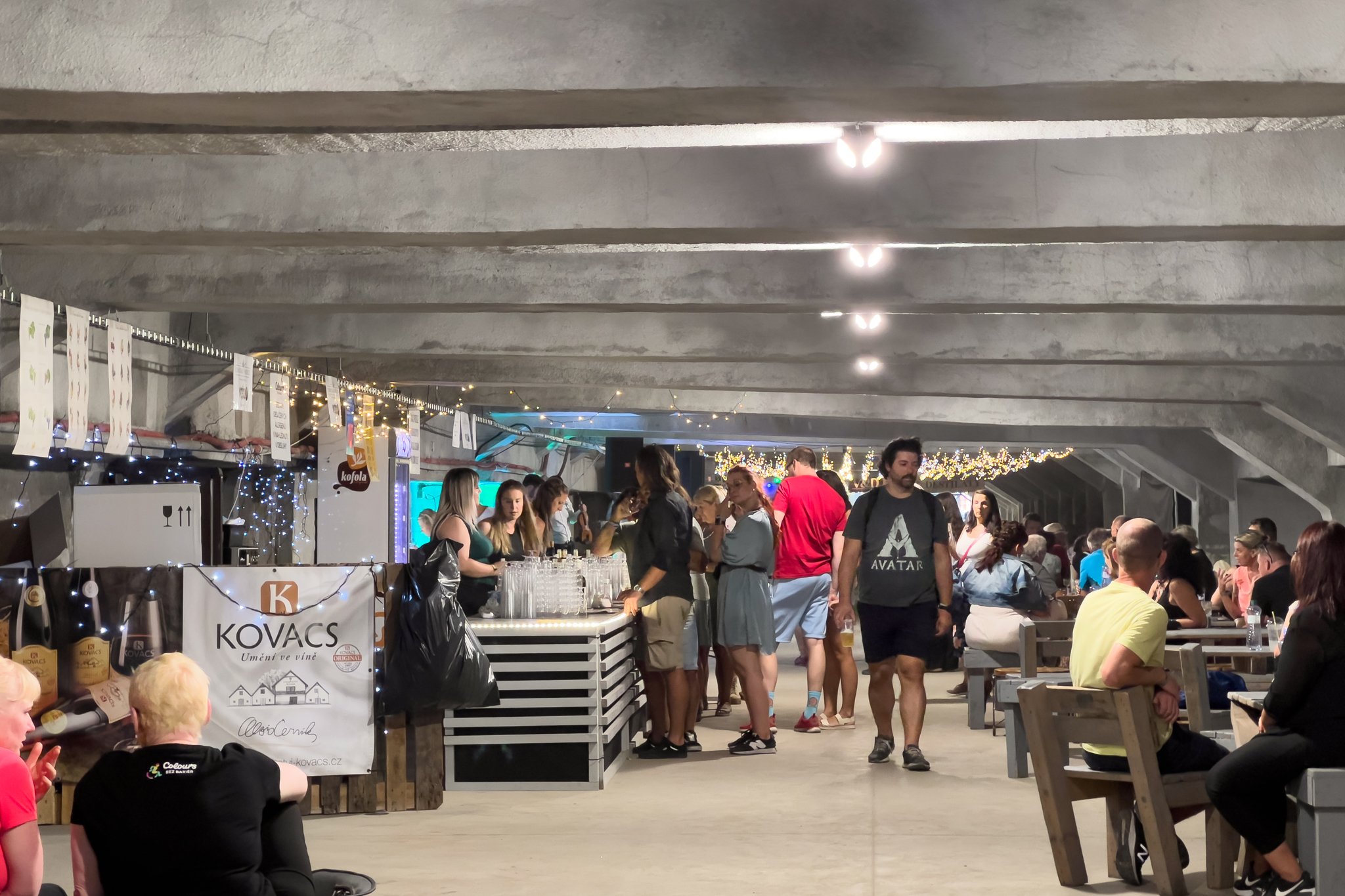
Can’t get to the renowned cellar at Valtice Castle? Come and sample some of the Czech Republic’s top 100 wines here.
Shop Local: Art and Craft Stalls
In the labyrinthine alleys and spare spaces between the behemoth stacks and pipelines, you’ll find lines of Czech artisans showcasing their craft from bespoke festival fashion wares and handcrafted jewellery, accessories, trinkets and take-home local snacks. It’s the perfect opportunity to take home a unique festival souvenir while supporting emerging homespun creatives. The tune-pumping Doktor Vinyl bus is also a quirky hideaway.
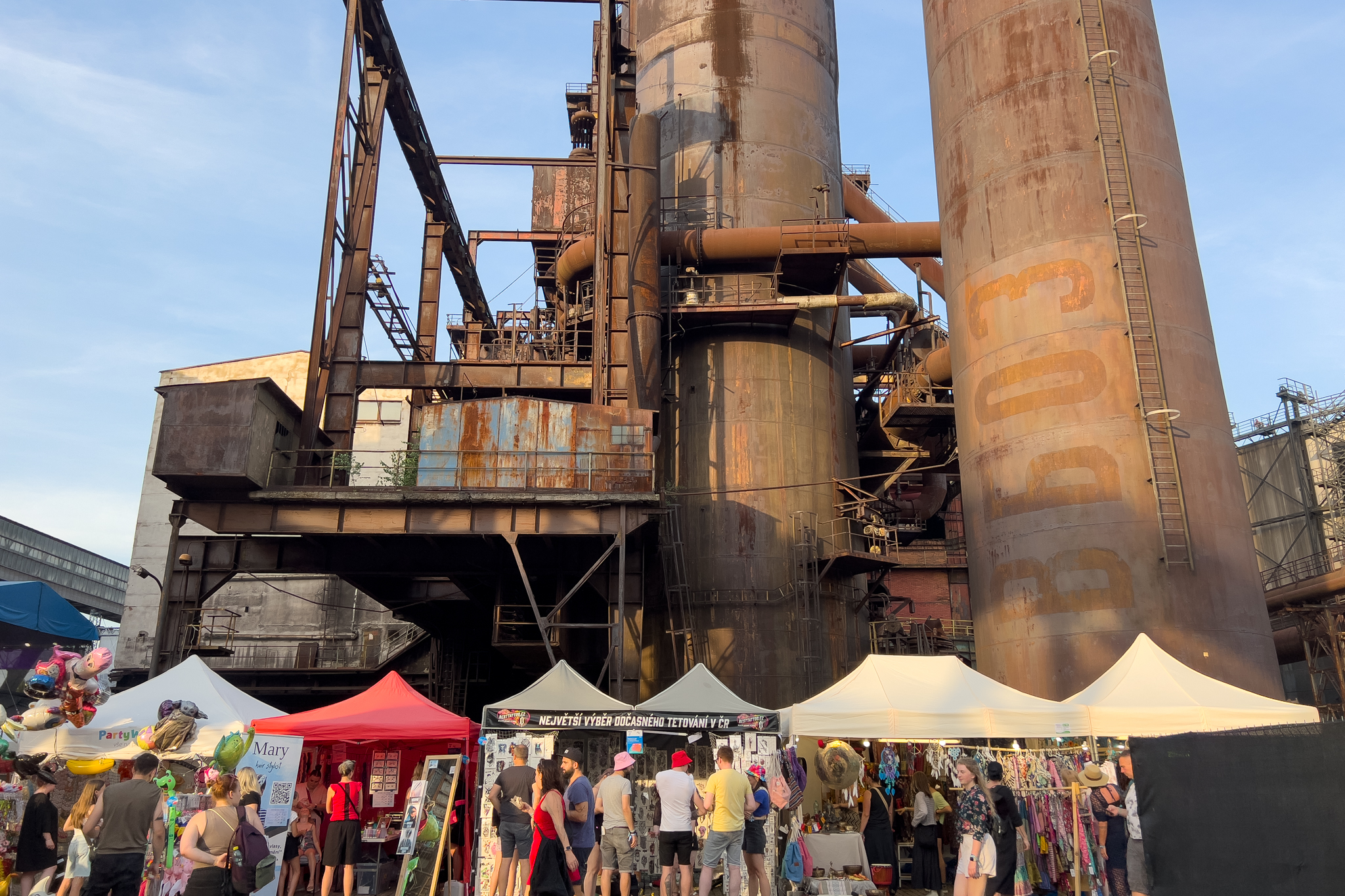
Shopping festival fashion.

A showcase of local artisans.
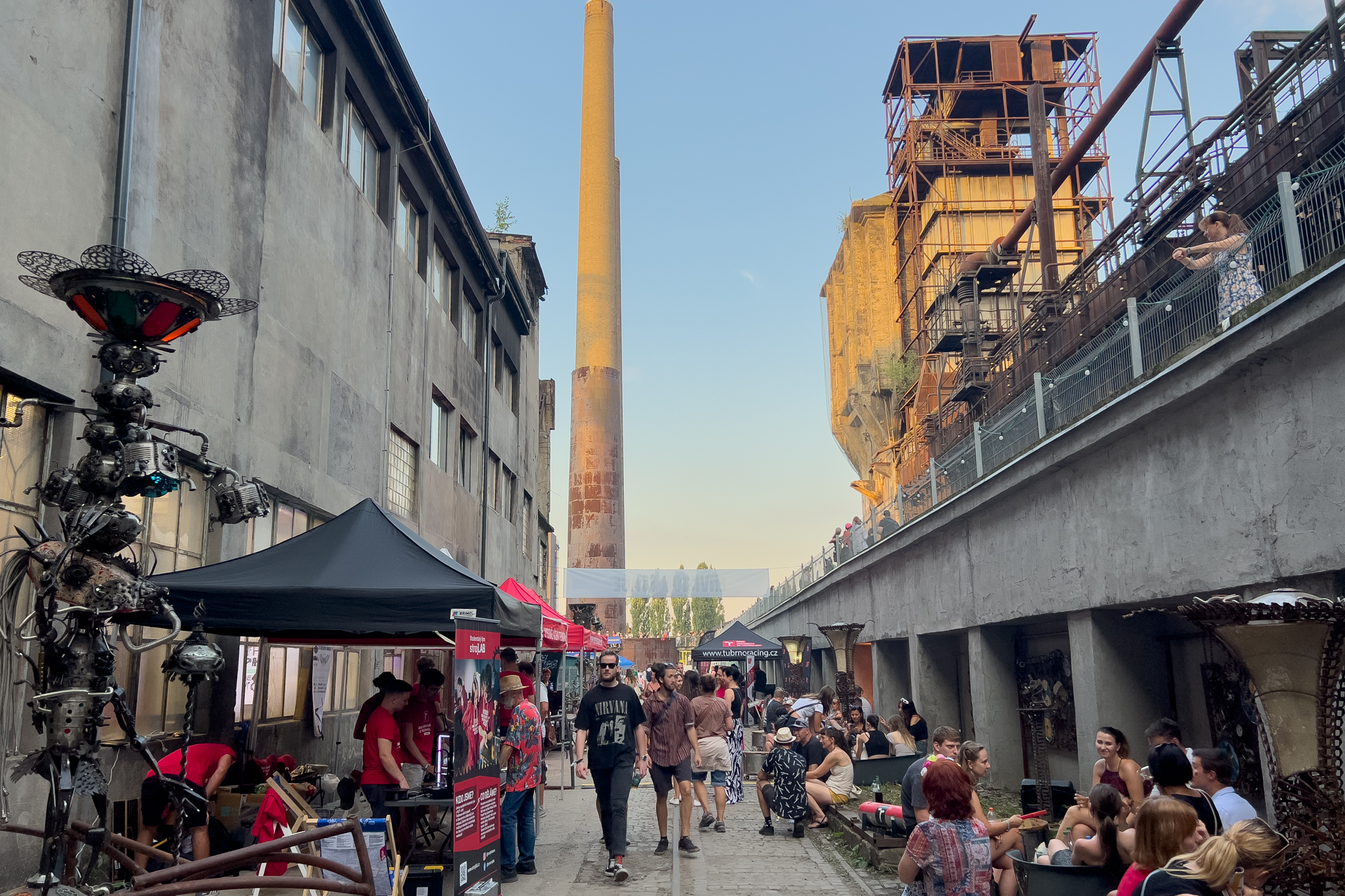
The narrow alleys and corners.

The tune-pumping vinyl van.
Colours of Ostrava Tickets
While you can purchase a selected single-day ticket, getting a four-day ticket is better value for money. All tickets include entry to the festival and all listings at the Meltingpot forum, and are exchanged on arrival for a chip wristband, which you’ll need to show and tap on the reader for entry and exit to the festival grounds.
- 4-Day Ticket (Adult) – €183
- 1-Day Ticket (Adult) – €125
- 4-Day Ticket (Age 15-21) – €125
- 4-Day Tickets (Children up to the age of 15) – €50
- Ages 65 and over – Free admission to the festival on Saturday.
Is the VIP upgrade worth it?
It’s a very pricey add-on – a 4-Day VIP Ticket (Adult) is €460, and you are paying for comfort and accessibility. The ticket includes separate and faster accreditation at the special festival entrance at Ruská Street, access to the VIP zone with its own toilets and cloakroom alongside a bar, and a huge seated gallery vista space overlooking the main headliner stage. Unless comfort tops crowd energy for you, it will be mostly wasted.
Buy tickets here on the official Colours site.
Where to Stay in Ostrava during the Festival
Ostrava is the Czech Republic’s third-largest city, but it doesn’t command the crowds or the steep prices of Prague and Brno. During the festival, you can either pitch a tent and camp or return to the comfort of a city-based hotel every evening.
Colours of Ostrava Camping Sites
The festival offers official camping grounds close to the site, which is the cheapest and most convenient option for those who want to fully immerse themselves in the Colours experience, especially as many Czechs choose this option.
The camping area is more comfortable than pure roughing it, equipped with a 24/7 reception, showers and toilets, food, grocery, and coffee stalls, as well as a free-to-use kitchen area. New for 2025 are washing machines and dryers.
Slezskoostravský Hrad Camp / Camp Silesian (Silesian Ostrava Castle area)
Basic camping here is cheap. It’s €29 to pitch a tent here on top of the €25 camp ticket. Caravan spots get pricier, starting from €208.
Tent Inn Camp (Silesian Ostrava Castle area)
Located on the same site as the basic grounds, this camp is the ideal option if you prefer to leave the equipment behind and hire a pre-pitched tent. Prices start from €125, which includes sleeping mats for 2 people. Airbeds and safety lock-ups can be booked as extras.
Chill Village Camp
This is the more luxurious and spacious glamping area, with fully equipped tent set-ups starting from €604 for up to five people.
Book camping spots and tent pitches here.
Ostrava Hotels in the City
If you prefer more homely comforts after the end of the festival day, there’s a host of decent hotels in the city. It’s well worth booking at least three months in advance; prices rise, and hotels fill up during the festival, so early booking is essential.
Mercure Ostrava Centre is one of the city centre’s newest hotels, located in a revived historic building. The Imperial Hotel is Ostrava’s first hotel, which opened in 1904 and is a legendary city-centre heirloom. Both are less than 10 minutes by tram to Dolní Vítkovice, south of the city centre.
Hotel city.city is a no-thrills, minimalist accommodation a few minutes from the main train station in an edgy local neighbourhood. Due to its northern city setting, the journey to Dolní Vítkovice is an additional 10 minutes by tram.
How to Get to the Colours of Ostrava Festival
Whether you stay in the city or at one of the east-bound campsites, you’ll likely use trams and buses to get to and from the festival. It’s worth purchasing the discounted festival transport ticket for city travel.
Post revelry, the best place to pick up a Bolt taxi when leaving from the festival site late is in the parking area behind the underpass in front of the festival site, or follow the crowds towards the Orlen petrol station, about a 10-minute walk away, where cars can stop for pick-up. The cost to return to the city is approximately €8-€12.
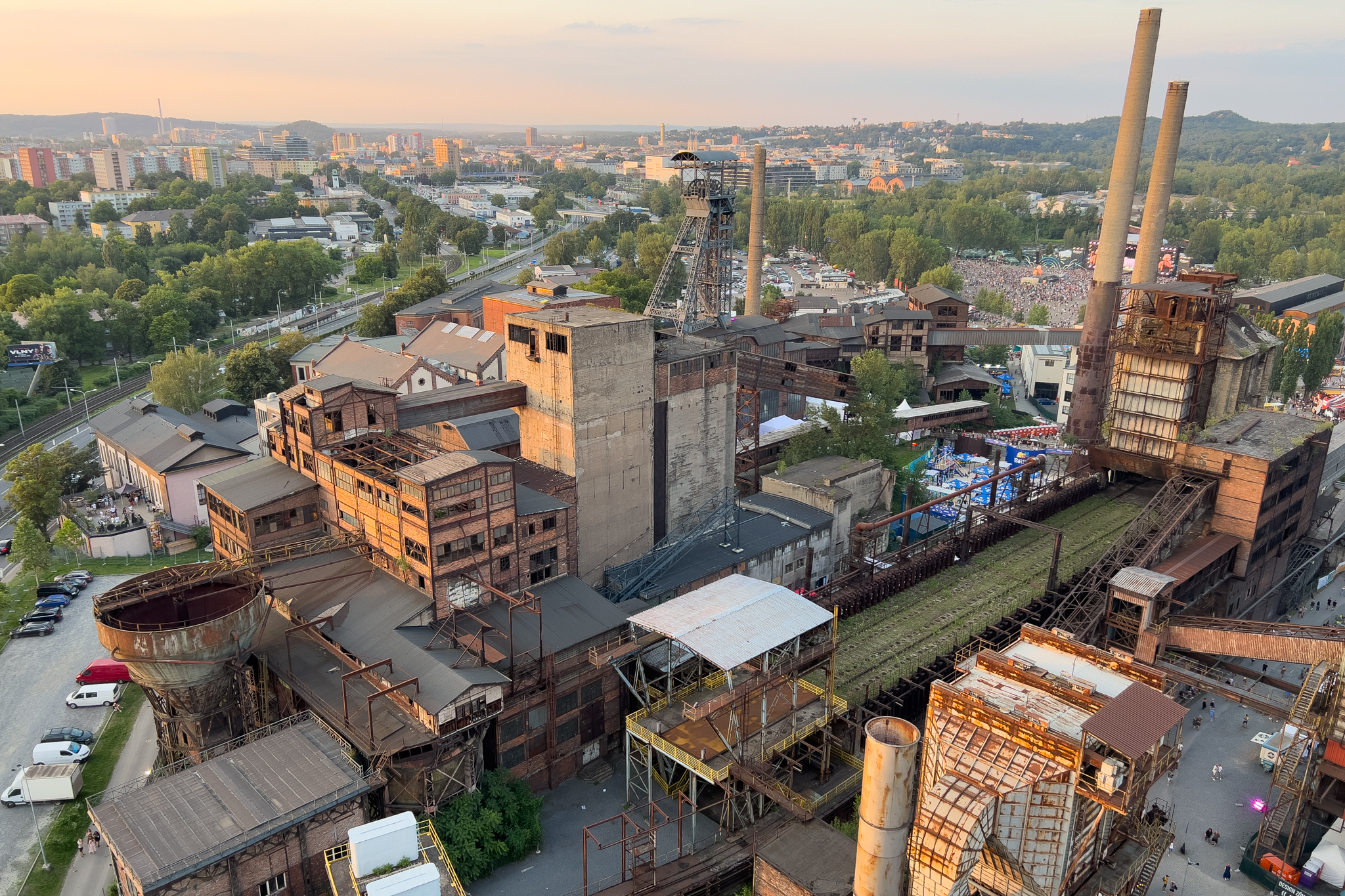
Dolní Vítkovice and Ostrava city.
Getting to Ostrava
Ostrava is a little off the beaten track, snug in the far northeast of the Czech Republic and close to the border with Poland. With numerous public transportation connections, travelling to Ostrava from neighbouring Czech cities and other European capitals is easy.
By Plane: Ostrava’s International Airport is Leoš Janáček Airport, some 25km from the centre, though easily reachable by the S4 train line. Ryanair flies to Ostrava from London Stansted Airport. Many international visitors also fly into the Czech capital, Prague, or Poland’s air hub, Katowice, and then take a train or bus to Ostrava within three hours.
By Train: If you plan to arrive by train, it’s essential to note that Ostrava has two train stations. The main Hlavní nádraží station is in the city, around 20-30 minutes on foot north of the centre, and ideally, the station you want to arrive at. Ostrava-Svinov is west of Ostrava, a 15-minute drive to the centre.
By Bus: FlixBus and RegioJet services connect Ostrava to Prague and Vienna, passing through Brno and Olomouc. Coming from Poland? Take a bus from Kraków and Warsaw to Ostrava.
Essential Colours of Ostrava Festival Tips for First-Timers
Bring comfortable shoes: Sturdy footwear is a must – the industrial site is vast, and you’ll be clocking up the steps on the dirt paths and gravel tracks leading the way.
Download the festival app: You’ll mainly want this for its line-up planner and maps, which are handy for highlighting what acts and shows you want to see.
Prepare for mixed weather: July in Ostrava can be unpredictable, and in one day you could experience baking hot afternoons, light drizzling rain and chilly evenings. Pack light and easy-to-carry layers.
Dress-up and dress code: Czechs here are hip-cool and understated in fashion, so you won’t see an abundance of glitz and glitter. But that doesn’t mean you can’t go all out in your sparkle and steampunk festival attire, which you’ll see more of over the festival’s weekend days.
See something new: Even if you’re there for the music, take a break to catch one of the talks, scramble through an art installation, or marvel at a theatre show. With fewer crowds, it’s also a great time to take the chance to get in front of the stage or up close to a big-name artist.
It’s accessible: Dolní Vítkovice is a barrier-free area, and in line with the Colours Without Barriers ethos, the festival features special viewing and relaxation areas for individuals with disabilities, sign language interpretation at select concerts and talks, and the option to request a trained assistant or a complimentary ticket for an accompanying person.
Explore Ostrava city: I’m a passionate advocate of Ostrava, having visited it a few times, and parts of the city are criminally underrated. Find historic city remnants in Masaryk Square, browse the art-packed halls of the Ostrava’s Gallery of Fine Arts and the Plato Gallery of Contemporary Art, and see the city’s former mining sites from the hiking heights of the still-smouldering Ema slag heap to the underground shaft of Landek Park Mine Museum.
READ MORE: Uncommon Things to Do in Ostrava to See it Differently.
Colours of Ostrava is a multi-sensory cultural experience set in one of the most striking venues you’ll ever visit. Even the most seasoned festival-goers will find something new, and to those new to the outdoor performing arts scene, Colours of Ostrava is a unique place to start. It’s certainly a place you won’t forget – you’ll come for the music and leave with a different perception.
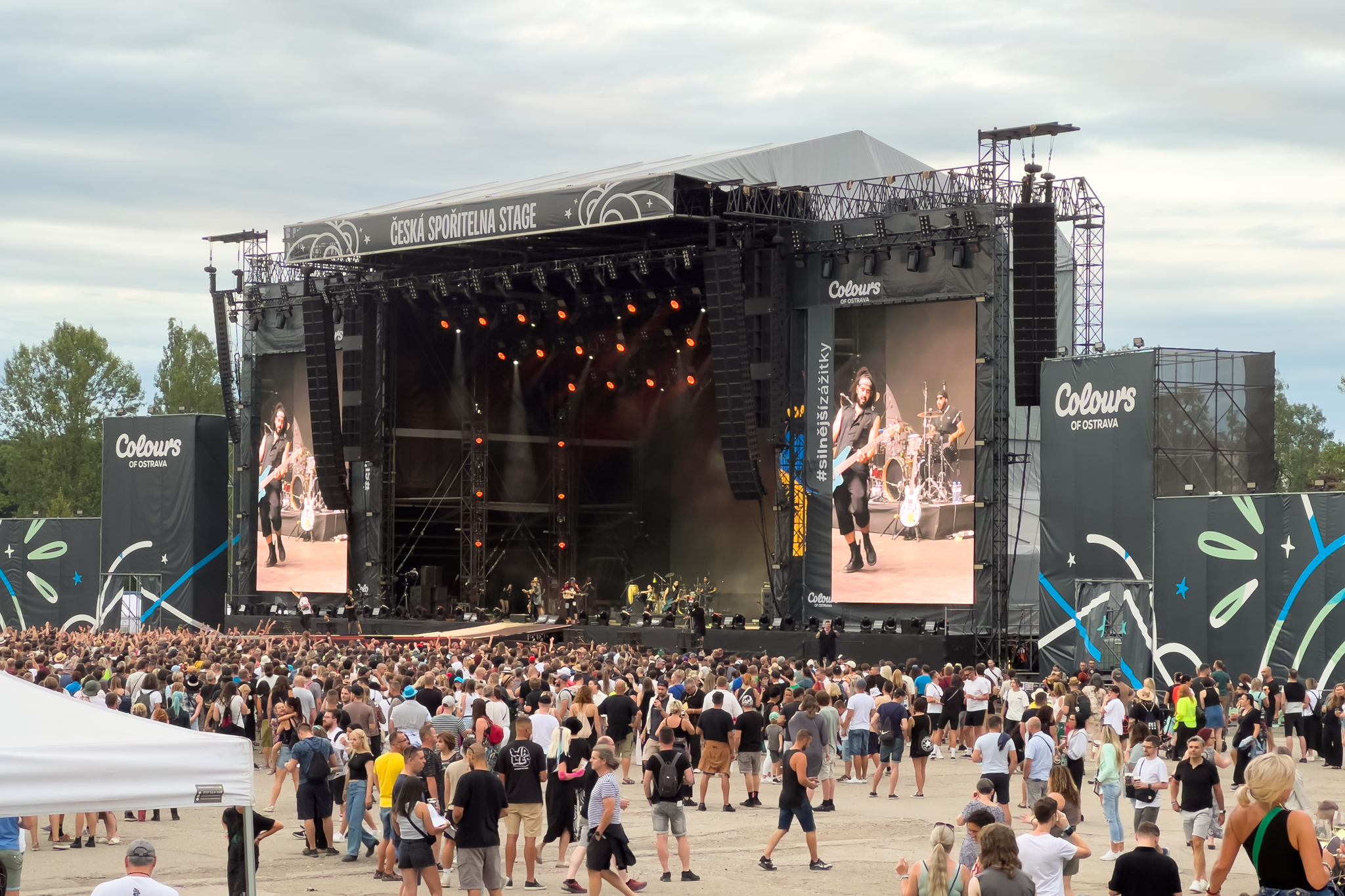
Ready for Colours of Ostrava?


Leave a Reply